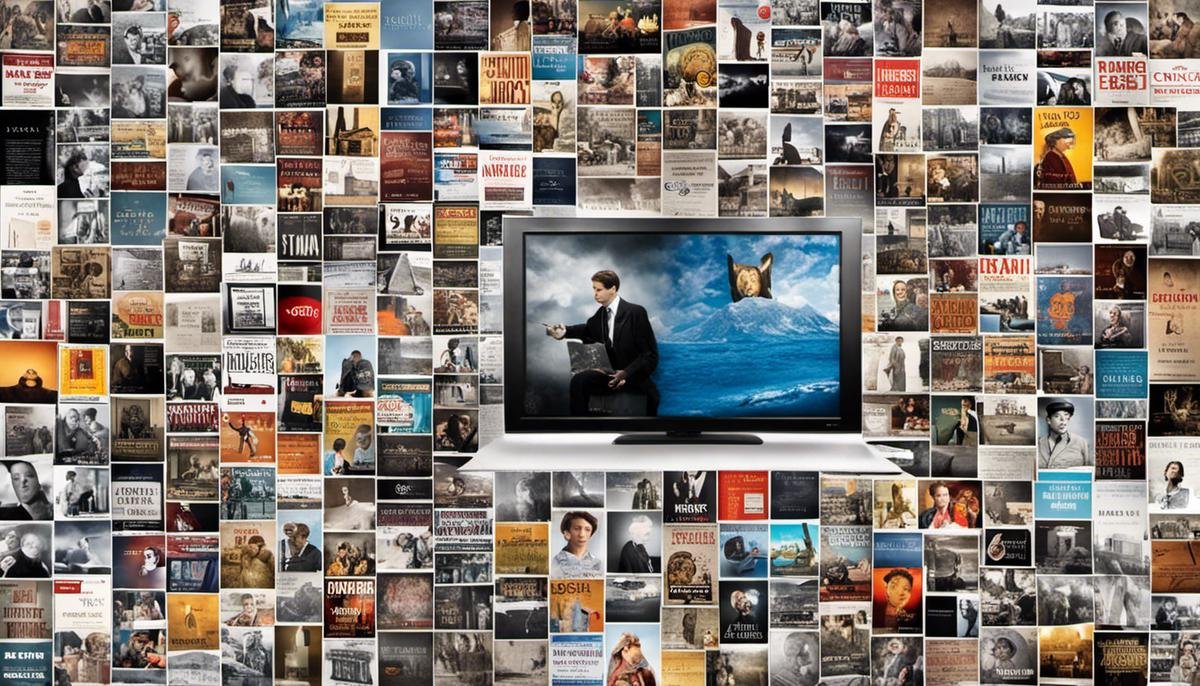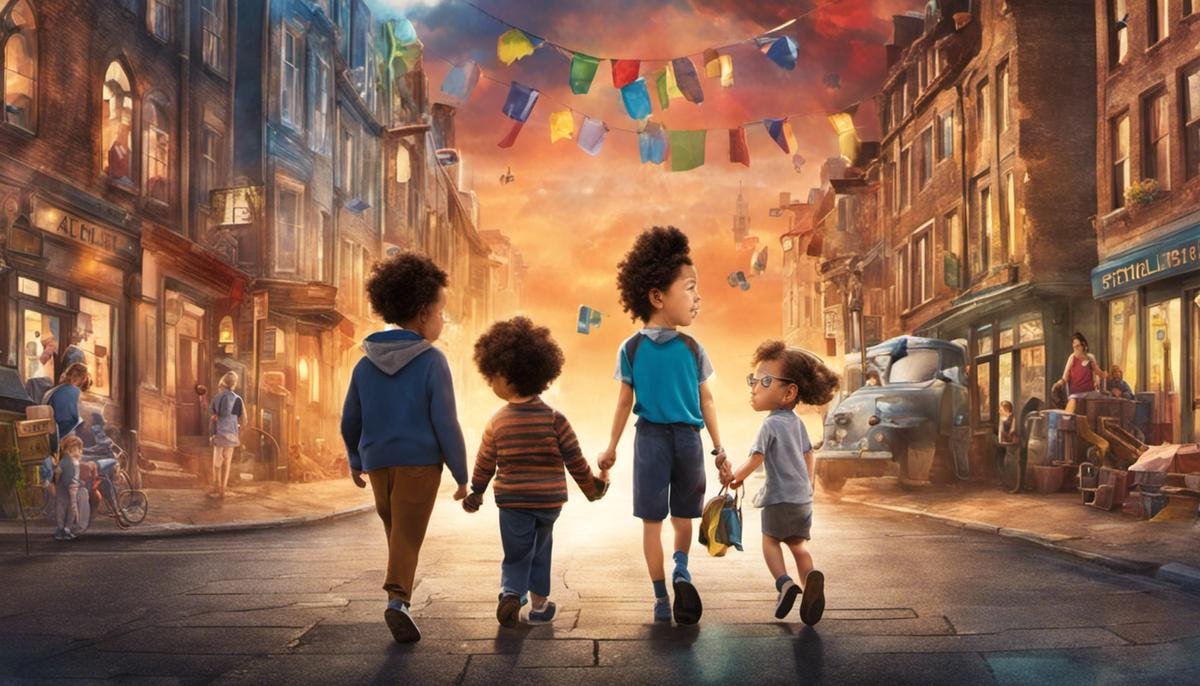
In an era where media is an increasingly omnipresent force shaping public perception, it’s crucial to evaluate its portrayal of pivotal social issues. A subject of particular interest is the depiction of individuals with autism. From films, books, TV series, to news reports, the representation of autism within these cultural frameworks has seen significant evolution over the years. This increasingly nuanced view of autism contrasts markedly with earlier, often uninformed or crassly caricatured representations. However, the media doesn’t always get it right, and stereotyping persists, leading to misperceptions and social stigma. At the same time, the media can and does serve a positive role, acting as a vehicle for autism awareness and promoting more inclusive understandings. Ultimately, it’s not just about representation, but about who gets to represent the autism community, which necessitates giving voice to individuals with autism within media content creation.
The Changing Face of Autism in Media
Autism and Media Representation: An Evolution
There’s nothing quite as beautiful as watching our children grow and learn about the world. Diversity is all around us, and it’s a gift that offers valuable lessons for our young ones. One aspect of diversity that has seen significant, progressive change in our media landscape is the representation of autism. Today, let’s explore how this representation has evolved over the years.
It was not too long ago where an autism diagnosis was a taboo subject, often misunderstood and largely misrepresented. Back in the 80s and early 90s, autism was frequently portrayed as a debilitating condition with the media focusing exclusively on the challenges, often sidelining the unique capabilities and strengths people with autism possess.
Movies like “Rain Man” (1988), while groundbreaking for its time, featured an autistic individual with savant syndrome, an extremely rare condition that only affects a small fraction of those on the autism spectrum. It dawned a crucial spotlight, yes, but it also unintentionally spread some misconceptions that everyone with autism had extraordinary abilities, overshadowing the broader, more nuanced autism spectrum.
Since then, there’s been a shift – slow yet constant. In recent years, our screens have begun to reflect a more accurate – and inclusive – depiction of autism. The media has started to unpack the complexities of autism, moving away from a single narrative and highlighting a variety of experiences.
One mark of this evolution is the animated children’s series “Pablo” (2017), where the main character is a 5-year-old boy with autism, teaching young audiences empathy and understanding about the autistic experience. A more recent example is Netflix’s “Atypical” (2017-2021), where autism is integrated naturally as part of the storyline without overshadowing the character’s persona – a significant departure from early depictions.
Even still, the evolution is an ongoing process, and there’s ample room for growth. One key area is the active involvement of autistic actors in playing autistic roles, providing an authentic voice for the representation.
A noteworthy example is the movie “Music” (2021), criticized for casting a neurotypical actress in an autistic role, triggering a strong reaction from the autism community about accurate and respectful representation. This incident highlights the increasing demand for authenticity, evidence that the conversation on representation and inclusivity is shifting.
As parents, relatives, or role models, it’s worth to take note of this media evolution. Beyond just entertainment, it fosters acceptance, empathy, and understanding, serving as a potent tool promoting diversity and inclusion for the next generations.
Media representation has a profound impact, especially on the minds of our young ones, shaping perceptions and attitudes. By allowing more authentic, diverse stories of autism to be told, society’s understanding of autism will continue to evolve, laying the foundation for a more inclusive and accepting future, just the way we strive our homes, neighborhoods, and communities to be. So, let’s keep the conversation going. The journey may be long, but every step counts.

The Impact of Autism Stereotypes in Media
Despite the recent advancements in media portrayal of autism, dangers persist due to misconceptions, harmful stereotypes, and misinformation that have yet to be fully eradicated. As we continue our exploration of this essential topic, it’s crucial to unpack these dangers for a better understanding and appreciation of autism’s complexities.
An unsettling pitfall arising from stereotypes present in the media is the dangerous association of violent behavior with autism. Examples abound in film and television that wrongfully suggest a correlation between autism and violence. This can incite unnecessary fear and bias against individuals living with autism. Individuals on the spectrum are more likely to be the victims rather than the perpetrators of violence. By perpetuating this stereotype, the media heightens the stigmatization that these individuals face daily.
Misinformation also extends to the portrayal of treatments for autism. While it’s true that various therapies can aid in managing autism symptoms, there is no ‘cure.’ This vital information often gets lost in translation due to the media’s oversimplification or outright incorrect representation of the condition. This can lead to unrealistic and harmful expectations for individuals with autism and their families.
Furthermore, the often one-dimensional depiction of autism in the media has a damaging effect. This limited view fails to capture the diverse form in which autism can present, leading to a harmful, all-encompassing stereotype that is unable to represent this diversity accurately. Lack of appropriate visibility for people on all points of the spectrum can contribute to a lack of awareness about what autism truly entails, leading to misunderstandings and prejudices.
The overrepresentation of male characters with autism is another daunting issue. This disproportionate focus can reinforce the incorrect assumption that autism predominantly affects males. Such a misconception can lead to underdiagnosis or misdiagnosis in females, denying them the necessary support and understanding for managing their condition.
Lastly, the perpetual framing of autism as a tragedy in media narratives puts an undue burden of pity on individuals with autism and their families. Scriptwriters often use autism as a plot device that incites tragedy and despair, thereby eclipsing the joy, potential, and accomplishments of people with autism. This narrative can lead to a deficit-based understanding that dangerously highlights limitations over capabilities.
In conclusion, as parents, caregivers, or supportive allies, it’s essential to challenge and debunk these harmful misconceptions about autism that persist in the media. We must advocate for a more accurate, respectful, and inclusive media representation that celebrates the diversity and individuality of autism, fostering a world where acceptance and understanding thrive. This is not merely the responsibility of media creators, but ours as a community, to ensure a brighter, inclusive future for everyone, especially our children on the autism spectrum.

Media’s Contribution to Autism Awareness
Continuing the discussion on the role of media in spreading autism awareness, it’s crucial to note that social media platforms have become prime spaces for advocacy movements. Accounts dedicated to autism awareness and acceptance are flourishing, providing accurate information, dispelling myths, and offering a platform for autistic individuals to share their stories unabridgedly. Through the power of hashtags and real-time dialogue, a more nuanced and positive view of autism is making its way into the world.
In recent years, documentaries have also played a critical role in reframing autism narratives. For instance, “Life, Animated” – the poignant tale of a young man with autism finding his voice through Disney movies – beautifully captures how autism intersects with other facets of human experience. Documentaries can take us on deeply personal journeys, affording audiences a chance to better understand autism and the individuals it affects.
Beyond traditional media platforms, the world of podcasts provides further opportunities for spreading autism awareness. Shows like “The Autism Show Podcast” or “The Autistic Me” provide a platform for open, candid conversations about autism. They often invite guests from diverse backgrounds to share their personal experiences, professional insights, and helpful resources. This variety enriches the dialogue around autism and helps paint a multifaceted picture of life on the spectrum.
Video games, too, are emerging as vehicles for autism awareness. “Auti-Sim“, a game that allows players to experience sensory overload, a common aspect of autism – offers a unique, accessible, and immersive view into the autistic experience. Meanwhile, “Pause Screen From Battle“, a game developed by an autistic creator, portrays the daily life of an autistic person in an engaging, non-condescending way.
Educational programs and websites specifically designed for autistic children and their families are on the rise, too. They provide a treasure trove of reliable information, fun learning resources, and supportive online forums that foster a sense of community.
The media – when wielded consciously and respectfully – has immense power in shaping the narrative around autism. It’s heartening to see the strides being made in this sphere, yet the journey isn’t over. The media landscape must continue to evolve, amplifying the voices and experiences of autistic people. This pushes society forward to a time when autism isn’t stigmatized or misunderstood, but embraced as another unique aspect of our shared human experience. The media has an infamous history of perpetuating stereotypes about autism, but it also holds the potential to dismantle them – and bridge the gap between our diverse human experiences.

The Voices of Autism in Media
Autism representation in today’s media has seen a commendable shift in trajectory, yet our journey in achieving nuanced inclusivity is far from over. This pendulum swing is particularly evident in campaigns for recognising autistic voices on various platforms, especially social media.
Social media, a frontier of advocates and allies, has become a prominent platform for raising awareness on autism. Twitter campaigns, blog discussions, Facebook groups and Instagram profiles champion the cause of autism, offering a space where autistic individuals can fully express themselves and the world, in turn, can gain insights directly from the source. Hashtags such as #ActuallyAutistic and #AutismDoesntEndAtFord have rallied communities together, bridging the communication gap, and making strides in fading the stigma surrounding autism.
Adding to the mix are the compelling documentaries that are making commendable attempts at reframing harmful narratives around autism. They go beyond capturing the routine life of autistic individuals by laying emphasis on the intersection of autism with other aspects of life. Take for example, “Life, Animated,” a heart-tugging documentary that captures how a young boy with autism connects with the world through Disney movies. This narration of interweaved realities strives to paint autism in a light far removed from misguided stereotypes.
Another powerful, and rather modern, advocate for autism awareness lies in the podcasting world. Podcasts like The Autism Podcast and Autism Spectrum Therapies foster candid dialogues about autism, shedding light on a spectrum of experiences from individuals and families living with autism. Their conversations span across daily challenges, triumphs, therapies, education, rights, and so much more.
In the realm of gaming, developers are taking note of autism, to provide experiences that resonate with a diverse group of players. Games like “Prism,” developed with an autistic audience in mind, encourage players to interact with the game environment via touch, an aspect often essential to many autistic people’s comfort and even communication. Experiences like these, which consider and cater to autistic individuals, go a long way in nurturing a welcoming environment, both in-game and out-of-game.
Perhaps, one of the most valuable resources coming to the forefront are the educational platforms specifically designed fostering a sense of community among autistic individuals and their families. Websites like Autism Speaks, National Autism Association, and the Autism Society offer reliable information and tips that greatly aid in understanding and nurturing autistic loved ones. These platforms shine a light on the necessity for accurate, accessible information which is a crucial component of advocacy.
The role of media in reshaping the discourse around autism can’t be understated. Yet, we must remember cautious optimism. Sure strides have been made towards an inclusive explorations of autism in media but largely by those who are on the outside looking in. An autistic individual’s journey is uniquely their own and only they can truly communicate their experiences. Therefore, the narrative around autism should be led by those actually living with it. Their voices and experiences need to be amplified in our collective attempt at crafting an accurate, respectful, and inclusive portrayal of autism for the world.
The representation we cultivate in our media holds the key to the world’s perception of autism. Let’s never take the power of that responsibility lightly.

Improving Autism Representation in Media: Next Steps
The landscape of media representation of autism has indeed come a long way, but there’s still a journey ahead. This involves not just understanding what autism is but instead refining how it’s depicted across various mediums. These steps need to be taken to further the progress that’s already been made.
Firstly, the media should strive for balanced storytelling. While it’s essential to the narrative to show the challenges of autism, portraying only the struggles paints an incomplete picture. The focus should be broadened to include the joys, triumphs, and yes, the unique way autistic people view the world. Highlighting the pleasures they find in their interests or their distinctive communication abilities will go a long way in painting a more rounded, humanized portrait of autism.
Secondly, it’s crucial the media representation isn’t limited to one type of autistic experience. Autism is a spectrum, which means there isn’t just one way to be autistic. People have varying abilities, needs, and experiences with autism. This diversity ought to be mirrored in media depictions.
Mental health professionals trained in autism diagnosis and treatment should be consulted during the creative process to secure a more accurate portrayal. Creating knowledgeable, multidimensional characters calls for an expert perspective.
Interestingly, the same applies to creating content on social media. This powerful tool can offer an accessible platform for autistic individuals to share their experiences and perspectives. Encouraging and amplifying these narratives would ensure authenticity.
Further to promote inclusion and fairness, autistic actors, writers, directors – content creators of all kinds – should be employed in the media. They ought to be playing their part in shaping and telling these stories.
Next, the media can play a role in combating discrimination by actively challenging harmful stereotypes associated with autism. This could be done by presenting factual information and stories from credible sources to contradict these stereotypes.
Last but by no means least, media should promote acceptance, not just awareness. For most of us parents, we know one thing for sure – acceptance starts at home, but it also ought to be backed up by what’s presented in the media.
All in all, the media can be a powerful tool in shaping perceptions, breaking down barriers, and promoting understanding and acceptance. With careful thought, consideration, and above all, respect, we can all move forward together in creating a more understanding and accepting society.

While significant strides have been made in the portrayal of autism in the media, there is still much ground to cover. The media landscape can be a mirror to society, reflecting its understandings, biases, and narratives about different social groups. For autism, the reflection is slowly becoming clearer, more authentic, and richly nuanced through various efforts to accurately depict this complex reality. Yet, this mirror also has the power to transform society’s views, dissolve stereotypes, and champion acceptance. For this to fully realize, people with autism need to be included in creative processes to ensure their experiences are faithfully portrayed, eschewing monolithic representation. With media possessing such power, it carries an urgent responsibility – to not merely reflect change but to lead it, not only diversifying the narratives offered but also shaping societal understanding of autism in a meaningful way.




